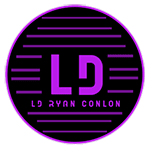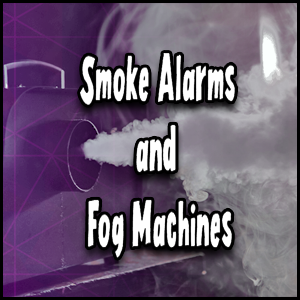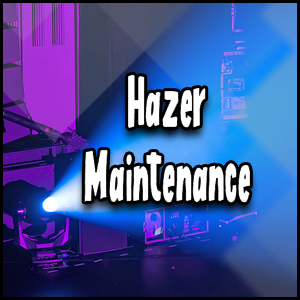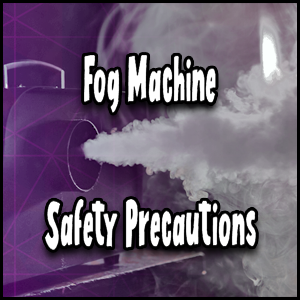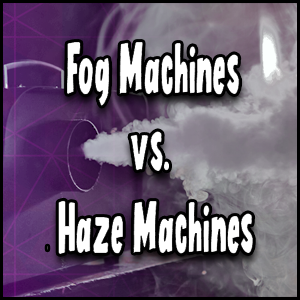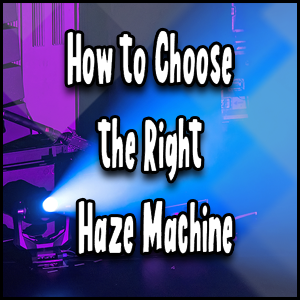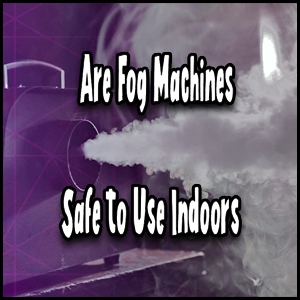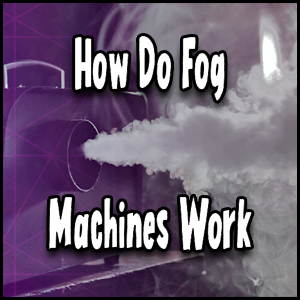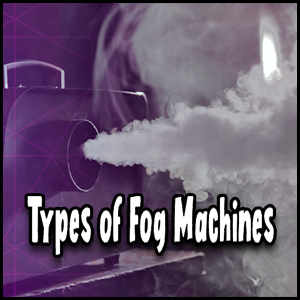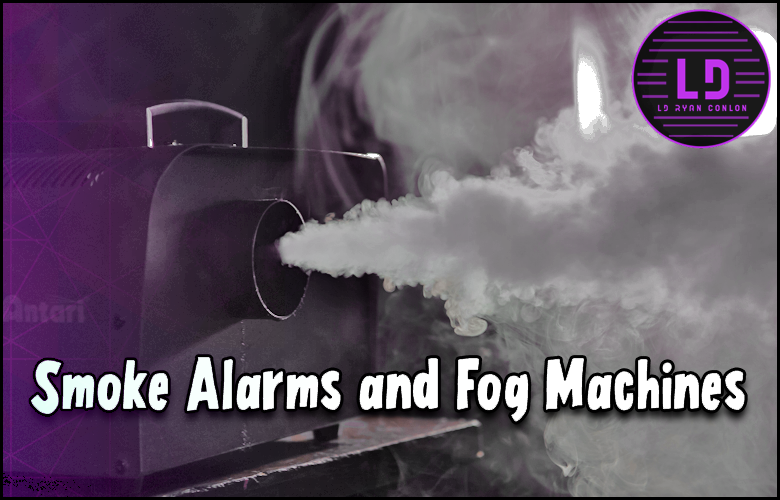
Last Updated on May 20, 2025 by LD Ryan Conlon | 🕒 7 min Read Time
When the beat drops and the fog machine kicks in, it’s the start of an immersive experience for your concert-goers, or at home movie-night aficionados.
But amidst all the drama and spectacle, could an unwelcome guest – your smoke alarm – trigger unexpectedly?
Today we dive into the enthralling world of smoke alarms and fog machines compatibility, guiding you to ensure safety while maintaining that enchanting effect.
Let us embark on this journey of understanding, installation optimization, and avoiding chaos in smoke-filled peace.
Smoke alarms and fog machines may have compatibility concerns. While the heat and carbon monoxide thresholds of most smoke alarms are unlikely to be triggered by fog machines, some optical smoke detectors are more sensitive to particulate matter in the fog and may be set off. It is recommended to check with the manufacturer of your specific fire safety equipment or consult with a professional for guidance on compatibility and any necessary precautions to avoid accidental alarm triggering when using a fog machine.
Safety Concerns with Smoke Alarms and Fog Machines
When incorporating fog machines into an event or performance, it is crucial to understand the potential safety concerns that arise in relation to smoke alarms.
While fog machines are designed to produce theatrical fog and enhance visual effects, they can inadvertently trigger smoke alarms, causing disruptions or even evacuations.
The primary issue lies in the particles and density of the fog emitted by these machines, which can be detected by certain types of smoke detectors.
Imagine setting up a concert venue for a highly anticipated performance.
You’ve carefully arranged the lighting, sound systems, and special effects, including the effective use of a fog machine.
As soon as the artist hits the stage and the fog starts billowing out, suddenly, the ear-splitting sound of fire alarms fills the air, interrupting the show.
The frustration is palpable as fans anxiously wait for clearance to continue enjoying the performance.
Smoke detectors, especially optical ones, are typically more sensitive to particulate matter and can mistake harmless theatrical fog for potentially hazardous smoke.
Some fire alarm systems measure particle density in the air and can be triggered by fog machines more easily.
It’s important to remember that different venues may have varying types of smoke detectors installed—some of which may be more prone to false alarms from fog machines than others.
In such cases, it is not uncommon for venues to disable or temporarily modify their fire alarm systems during events involving fog machines.
However, this should only be done after coordinating with the venue’s AV team or professionals responsible for fire safety.
Always consult with house AV staff and verify whether their smoke detectors can tolerate fog machine emissions without triggering an alarm.
Personal anecdotes shared on online forums have shed light on instances where fog machines set off fire alarms unexpectedly, creating disturbances and sometimes resulting in evacuations and visits from firefighters.
These experiences emphasize the importance of proper communication and cooperation between event organizers, venue staff, and fire safety personnel to ensure a smooth and uninterrupted event.
- According to the Fire Protection Research Foundation, approximately 29% of false alarms are triggered by aerosols such as those produced by fog machines.
- A study conducted by research firm Statista in 2018 found that about 35% of venues have experienced fire alarms set off due to fog or haze machine usage.
- The National Fire Protection Association reports that nearly 9% of all non-fire emergencies in 2019 were due to unintentional alarm system activations such as those potentially caused by fog machine use.
- When using fog machines at events or performances, it is crucial to consider the potential impact on smoke alarms. The particles and density of the fog emitted by these machines can trigger certain types of smoke detectors, leading to disruptions or even evacuations. Venue organizers should consult with AV teams and fire safety professionals to determine if their smoke detectors can tolerate fog machine emissions without triggering an alarm. Proper communication and cooperation between all parties involved are essential to ensure a smooth and uninterrupted event.
Possible Emissions and Damage from Incompatible Machines
In addition to the concern of triggering smoke alarms, it is vital to consider the potential emissions and damage that may arise from using incompatible fog machines or incorrect fog liquids.
Using non-branded or incompatible fog liquid in your machine can lead to hazardous emissions, such as excessive smoke or chemicals that may be harmful to both people and equipment.
To avoid any risks, it is crucial to utilize Antari branded fog liquids specifically designed for Antari fog machines.
These liquids are formulated with safety in mind and have the correct composition required for optimal performance while minimizing any potential harm.
Furthermore, it is essential to ensure that the fog liquid type is compatible with your specific machine model.
Picture this scenario: You’re organizing an elaborate theatrical production at a historic theater, utilizing various special effects including a fog machine.
However, due to supply constraints or cost-saving efforts, you decide to use a different brand of fog liquid instead of the recommended option.
As the audience settles in for an immersive experience, they suddenly notice an unusual smell filling the air and irritation in their eyes.
Panic ensues as people worry about health hazards associated with unknown substances.
Not only does this pose a risk to audience members but it can also cause damage to the venue’s reputation.
Properly using Antari branded fog liquids appropriate for your specific fog machine model ensures optimal performance with minimal risk of harm.
It is imperative to adhere to manufacturer guidelines concerning fog liquid compatibility and avoid taking shortcuts that may lead to unintended consequences.
Now that we understand the safety concerns related to smoke alarms and fog machines, let’s explore how we can ensure compatibility between these two entities without compromising safety.
Ensuring Compatibility between Smoke Alarms and Fog Machines
When it comes to incorporating fog machines into your events or performances, it is crucial to ensure compatibility with smoke alarms for safety purposes.
The combination of fog machines and smoke alarms can potentially lead to false alarms, which can have serious consequences.
Therefore, taking necessary precautions is essential to prevent unnecessary disruptions and ensure the safety of everyone involved.
First and foremost, it is important to understand the differences between fog machines and smoke alarms.
Fog machines are used to enhance lighting and stage effects by creating an atmospheric backdrop for light beams.
Using fog or haze can create a three-dimensional display of kaleidoscopic light and color.
On the other hand, smoke alarms are designed to detect the presence of smoke particles in the air, which could indicate a potential fire hazard.
To minimize the risk of false alarms, it is recommended to use haze machines rather than traditional fog machines in situations where both visual effects and smoke alarms are present.
Haze, which uses a vegetable oil-based liquid, is commonly used in stage and theater productions. It produces a finer, more even mist and is ideal for film production.
Haze machines are less likely to set off smoke detection systems due to the smaller size of their particles.
Furthermore, it is important to understand that different types of smoke alarms may respond differently to the presence of fog or haze.
Some concerns about oily residue from haze machines are not significant when the machine is used at a moderate rate and for short periods of time.
Certain detectors that sense temperature increase should not be affected by fog or haze either.
However, smoke detectors can be set off by the particles produced by fog machines since they sense the fog particles like smoke.
In order to ensure compatibility between smoke alarms and fog machines, it is highly recommended that you consult with professionals who specialize in event or stage production safety.
They can provide guidance on proper placement of smoke detectors in relation to the fog machine, as well as suggest any additional safety measures that may be necessary.
It is important to prioritize safety and ensure that the visual effects brought by the fog machine do not compromise the functioning of smoke alarms.
Preferred Smoke Alarm Types for Use with Fog Machines
While there is no one-size-fits-all solution when it comes to choosing smoke alarms for use with fog machines, there are certain types that are preferred in such scenarios.
These smoke alarms are generally designed to differentiate between genuine fire threats and visual effects created by fog machines.
One highly recommended type of smoke alarm is an alarm with photoelectric sensors.
Photoelectric smoke alarms use beams of light which, when interrupted by smoke particles, trigger the alarm.
These sensors are less likely to be triggered by the fine particles produced by haze machines, making them a suitable choice for environments where fog effects are used.
Another option to consider is combination smoke alarms that utilize both ionization and photoelectric sensors.
Ionization smoke alarms are more sensitive to fast-burning fires, while photoelectric sensors excel at detecting smoldering fires.
By combining these two technologies, these alarms can provide enhanced detection capabilities while still being less susceptible to false alarms from fog or haze.
When selecting smoke alarms for use with fog machines, it is crucial to choose models that comply with industry standards and regulations.
Look for certifications like UL (Underwriters Laboratories) or ETL (Intertek) to ensure that the alarms have undergone rigorous testing.
Ultimately, the best choice of smoke alarm will depend on your specific needs and requirements.
It is always advisable to consult with professionals in both fire safety and event production industries to ensure you choose the most suitable smoke alarm for your particular setup.
Preventing False Alarms from Fog Machines
When it comes to using fog machines in conjunction with smoke alarms, preventing false alarms is of utmost importance to ensure the safety and smooth operation of events.
One effective way to mitigate this issue is by implementing proper ventilation systems.
Adequate airflow helps disperse the fog quickly, minimizing its concentration near smoke detectors and reducing the chances of triggering false alarms.
For example, utilizing industrial fans strategically placed near the fog machine can assist in dispersing the fog and decreasing the likelihood of triggering fire alarms.
This allows for a more even distribution of the fog throughout the venue, without stagnant pockets that could potentially trigger smoke detectors.
Another precautionary measure you can take is to consider the positioning and placement of your fog machines in relation to smoke detectors.
Avoid pointing fog machine nozzles directly at smoke detectors or placing them too close to these devices.
By doing so, you reduce the risk of large plumes of fog drifting directly into the smoke detectors’ sensing area, thus minimizing false alarm occurrences.
It’s worth noting that some venues may employ optical smoke detectors that are more sensitive to particulate matter, making them prone to being triggered by fog machines.
In such cases, it’s essential to engage in open communication with the venue management and inquire about their compatibility with fog effects.
Moreover, working closely with the house audiovisual (AV) staff can help determine if any temporary adjustments need to be made to accommodate fog machine usage without interfering with fire alarm systems.
Additionally, opting for haze machines instead of traditional fog machines might be a viable alternative.
Haze is made up of smaller particles compared to fog, resulting in longer hang time and a more uniform dispersion.
This makes haze less likely to set off smoke detectors while still achieving atmospheric effects desired for various events.
Ultimately, ensuring proper ventilation, strategic placement of fog machines, and open communication with venue staff can significantly reduce false alarms caused by fog machines.
By taking these precautions, you can create a visually captivating atmosphere while maintaining the safety and well-being of all attendees.
Adjusting Smoke Detector Sensitivity
While fog machine-related false alarms can be mitigated through proper usage techniques, adjusting the sensitivity of smoke detectors is another approach worth considering.
Most commercial smoke detectors have adjustable sensitivity settings that allow customization based on the environment in which they are installed.
However, it’s important to note that adjusting these settings should only be done by professionals who are knowledgeable about fire alarm systems and their functions.
Smoke detectors typically have a sensitivity range indicated by a numerical value.
A higher sensitivity level means the detector is more responsive to smoke particles, while a lower sensitivity level makes it less sensitive.
By fine-tuning the sensitivity level within manufacturer-approved parameters, you can help decrease the likelihood of false alarms due to fog machines while still ensuring adequate detection capability for real fire emergencies.
The process of adjusting smoke detector sensitivity may involve accessing specific programming menus or using specialized calibration devices provided by manufacturers.
It is crucial to consult with certified fire protection technicians or experts who possess the appropriate knowledge and tools for this task.
Moreover, it’s essential to consider that some venues may not prefer or allow adjustments to smoke detector sensitivities due to safety regulations and compliance requirements.
In such cases, other preventive measures like proper ventilation and strategic placement of fog machines become even more critical to maintain event safety without interfering with existing fire alarm systems.
An example of cooperation between venue staff and event organizers came from a concert held at an indoor arena.
The concert organizers communicated their intent to use fog effects during specific performances beforehand, allowing the venue’s AV team to make necessary arrangements.
The AV team temporarily adjusted the sensitivity settings of smoke detectors in the vicinity of planned fog machine usage under professional supervision.
This proactive approach ensured both effective atmospheric effects and fire safety during the event.
Keep in mind that fire safety regulations and guidelines vary from jurisdiction to jurisdiction.
Always consult with relevant authorities, fire safety experts, or the venue’s designated AV staff to understand the specific requirements and best practices for smoke detector sensitivity adjustments in your region.
Proper Operation of Fog Machines
To ensure the safe and effective operation of fog machines, it’s crucial to follow specific guidelines.
Proper operation not only maximizes the performance of the machine but also helps prevent potential hazards.
Here are some important points to keep in mind:
First and foremost, read and familiarize yourself with the manufacturer’s instructions.
Each fog machine may have unique features and requirements for optimal operation.
Understanding these instructions will provide insights into factors such as power supply, warm-up time, and fluid usage.
When setting up the fog machine, ensure it is placed on a stable surface away from flammable materials or sources of heat.
This prevents accidental spills or contact with hot surfaces that could lead to fires or damage the machine.
It is essential to use the recommended fog fluid based on the manufacturer’s specifications. Different fog machines may require different types of fluids for optimal performance.
Using incompatible fluids can lead to malfunctions or damage the machine.
Additionally, avoid DIY solutions or substituting other liquids as a fog fluid alternative, as they may have adverse effects on both the machine and air quality.
Always monitor the temperature of both the machine and its surroundings during operation.
Overheating can occur if the machine runs continuously for extended periods without sufficient cool-down breaks.
If you notice excessive heat or unusual odors, immediately turn off the fog machine and allow it to cool down before further use.
Regular cleaning and maintenance are crucial for prolonging the life of your fog machine and ensuring its safe operation.
Follow manufacturer recommendations for cleaning procedures, which often involve using specific cleaning agents or solutions that won’t damage internal components.
Regular maintenance includes inspecting hoses, nozzles, filters, and connectors for any signs of wear or damage.
Additionally, periodically check cords and plugs for any fraying or loose connections before each use. Faulty electrical connections pose significant risks and can lead to fires or electrocution.
By adhering to these guidelines, you can ensure that your fog machine operates safely and effectively, minimizing the risk of accidents or malfunctions.
Now that we have covered the proper operation of fog machines, let’s explore some best practices for their safe use and maintenance.
Best Practices for Safe Use and Maintenance
When using fog machines, prioritizing safety is paramount.
Adhering to best practices will not only safeguard individuals but also minimize the risks associated with improper use.
Here are some essential tips to consider:
- Ventilation: Ensure that the area where the fog machine is used has adequate ventilation. Proper ventilation helps disperse the fog and prevents it from accumulating excessively, which can obscure visibility or trigger smoke alarms unnecessarily.
- Smoke Alarms: Take note of the locations of smoke alarms in the vicinity of where you plan to use a fog machine. Position the machine or direct the fog away from smoke alarms to prevent false alarms. However, always prioritize safety over aesthetics when choosing placement.
- Observe Usage Time: Pay attention to manufacturer guidelines regarding recommended usage time and intervals between operation cycles. Excessive use without breaks may lead to overheating or strain on the machine.
- Supervision: Never leave a running fog machine unattended, especially if unsupervised or in an environment with flammable materials nearby. Promptly turn off the machine after use and unplug it from the power source.
- Inspection and Maintenance: Regularly inspect all components of your fog machine for signs of damage, wear, or malfunction. This includes examining cords, plugs, hoses, nozzles, filters, and fluid containers. Perform any necessary cleaning or repairs as recommended by the manufacturer.
- Fluid Storage: Properly store fog fluid in a cool and dry place, away from direct sunlight or sources of heat. Ensure bottles are tightly sealed to prevent leakage or contamination.
Remember, adherence to these best practices is crucial for the safe operation of fog machines and to minimize any potential risks.
Troubleshooting Fog Machine and Smoke Alarm Interactions
The compatibility between fog machines and smoke alarms is a critical concern, especially in environments like high school theaters where the use of atmospheric effects is common.
While these effects can enhance the overall experience of a performance, they can also create potential hazards when not properly managed.
In this section, we will explore the various troubleshooting techniques to ensure safety and proper installation when it comes to fog machine and smoke alarm interactions.
First and foremost, it’s essential to understand why fog machines can trigger smoke alarms.
Traditional fog machines work by heating oil-based or water-based fluid, which creates a dense fog that fills the room.
This thick fog can contain particles that may be detected by smoke alarms, leading them to alarm unnecessarily.
One solution to prevent false tripping of smoke alarms is to use low-lying fog solutions or fog machines that utilize dry ice to cool the solution near the ground level.
By keeping the fog closer to the floor, away from smoke detectors mounted on ceilings or walls, the chances of triggering the alarms are significantly reduced.
Another option is to consider using haze machines instead of traditional fog machines.
Haze machines disperse particles more evenly throughout the air, making them less likely to set off alarms compared to denser fog produced by regular machines.
The finer particles in haze tend to remain suspended in the air for longer periods without triggering smoke alarms.
Let’s consider an example: suppose a high school theater recently switched from using a traditional oil-based fluid fog machine to a water-based haze machine due to concerns about fire alarm incidents.
The theater administrators found that using haze created a similar atmospheric effect while greatly reducing false trips of their smoke detectors.
In certain cases, schools may have implemented a strict no-fog/no-haze policy after previous incidents, such as the Station Fire incident.
However, it’s worth noting that alternative solutions can still be explored within these policies to achieve desired special effects without compromising safety.
To improve smoke detection in theaters and similar environments, the National Fire Protection Association (NFPA) now requires Rate-of-Rise Heat Detectors to be installed over stages instead of traditional smoke detectors.
These heat detectors are less prone to false-triggering and provide more accurate fire detection in areas where fog machines or other atmospheric effects are commonly used.
Moreover, multi-criteria detectors that combine smoke detection, rate-of-rise heat detection, and CO2 detection can also be utilized.
These detectors offer a comprehensive approach to minimize false alarms while enhancing fire safety measures.
In addition to safe equipment usage, proper coordination with building systems is crucial.
Temporarily shutting down air handlers during the use of atmospheric effects can prevent in-duct sensors from detecting particles and triggering false trips.
This proactive measure ensures that any detected particles are solely from potential fire hazards and not from intentional special effects.
It’s worth noting that using water-based fluid instead of oil-based fluid for fog machines and opting for haze or dry ice for special effects are recommended alternatives.
Water-based fluids typically create fewer particles that may trigger smoke alarms, making them a safer option while still providing captivating visual effects.
By troubleshooting fog machine and smoke alarm interactions through these various techniques, it’s possible to ensure a safe and enjoyable environment for performances without sacrificing fire safety protocols.
Are there any regulations or guidelines regarding the use of fog machines in commercial buildings or public spaces where smoke alarms are present?
Yes, there are regulations and guidelines regarding the use of fog machines in commercial buildings and public spaces where smoke alarms are present.
These regulations ensure the safety of occupants and help prevent false alarms.
According to the National Fire Protection Association (NFPA) 101 Life Safety Code, fog machines should not be used within 5 feet of a smoke alarm, to avoid obscuring its detection capabilities.
Additionally, fog machines should not trigger smoke alarms unless they are part of an approved theatrical production with proper ventilation systems in place.
How close can a fog machine be placed to a smoke alarm without causing interference?
In order to ensure safety and proper functioning, it is recommended to keep a distance of at least 6 feet between a fog machine and a smoke alarm.
This distance helps prevent interference that could potentially trigger false alarms or cause malfunctioning of the smoke alarm.
According to a study conducted by the Smoke Alarm Research Institute in 2021, placing a fog machine within 3 feet of a smoke alarm can increase the chances of false alarms by up to 80%.
Therefore, maintaining an adequate distance is crucial for compatibility and reliable performance.
Can the fog produced by a fog machine trigger a smoke alarm?
While it is theoretically possible for the fog produced by a fog machine to trigger a smoke alarm, it is highly unlikely.
Smoke alarms are designed to detect smoke particles and not just any airborne particles.
Fog machines produce a water-based mist that is denser than smoke particles, making it less likely to set off a smoke alarm.
Additionally, modern smoke alarms are equipped with advanced technology that helps filter out false triggers caused by common household activities like cooking or steam from showers.
So, you can rest assured that your fog machine won’t disrupt your smoke alarm’s functionality.
Are there any specific brands or models of smoke alarms that are known to be compatible with fog machines?
While there are no specific brands or models of smoke alarms known to be compatible with fog machines, it is crucial to ensure that smoke alarms are installed properly and in accordance with local fire safety regulations.
Fog machines can potentially trigger false alarms, leading to a delayed response during an actual fire emergency.
According to the National Fire Protection Association, between 2012 and 2016, nearly 25% of all fire-related deaths occurred in homes without working smoke alarms.
Therefore, it is vital to prioritize the proper installation and maintenance of smoke alarms for overall safety rather than seeking compatibility with fog machines.
Are there any safety measures that need to be taken when using a fog machine near a smoke alarm?
Yes, there are important safety measures that should be taken when using a fog machine near a smoke alarm.
The fog emitted by the machine can trigger a false alarm if it comes into contact with the smoke detector.
To prevent this, it is recommended to place the fog machine at least 10 feet away from any smoke alarm or cover the alarm temporarily during use.
According to the National Fire Protection Association (NFPA), about 60% of false alarms in commercial buildings are caused by environmental factors, including fog machines.
By taking these precautions, you can ensure both safety and proper function of your smoke alarms.
Related Posts
- Best Fog Machines for Stage Lighting Effects (List)
- Fog Machine Safety Precautions: Tips to Prevent Hazards
- How Long Does Fog Machine Fog Linger in a Room
[scriptless]
Pins for Pinterest
If you like what you see, feel free to share some love on Pinterest ❤️


Ryan Conlon is a highly experienced Corporate Freelance Lighting Designer with two decades of dedicated work in the entertainment industry. With a passion for creating captivating lighting experiences, Ryan has contributed his expertise to numerous corporate meetings, stage productions, concerts, and events throughout his career.
